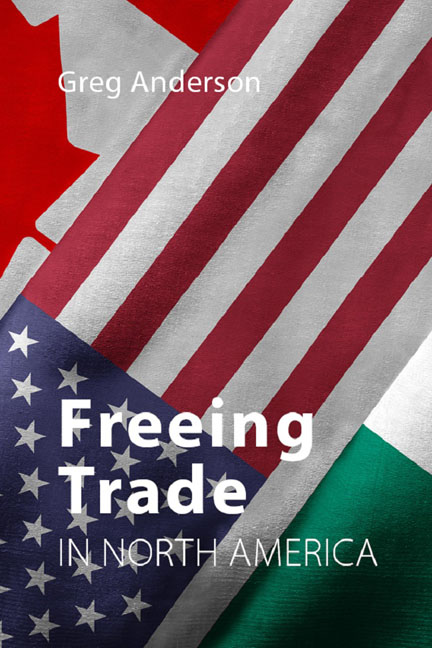Book contents
- Frontmatter
- Contents
- Introduction
- 1 The North American Idea
- 2 What the NAFTA is (and is not)
- 3 North America as Region
- 4 New Ground Broken and (Mixed?) Results
- 5 Much ado about Foreign Direct Investment
- 6 Governance in the NAFTA, or Lack Thereof?
- 7 Labour and the Environment
- 8 NAFTA 2.0: Did the Usmca Modernize Anything?
- Appendix 1 Spaghetti Bowl of Commitments by the 12 Trans-Pacific Partnership Signatories
- Appendix 2 US Trade in Goods and Services With NAFTA Partners, 1989–2017
- References
- Index
2 - What the NAFTA is (and is not)
Published online by Cambridge University Press: 24 August 2023
- Frontmatter
- Contents
- Introduction
- 1 The North American Idea
- 2 What the NAFTA is (and is not)
- 3 North America as Region
- 4 New Ground Broken and (Mixed?) Results
- 5 Much ado about Foreign Direct Investment
- 6 Governance in the NAFTA, or Lack Thereof?
- 7 Labour and the Environment
- 8 NAFTA 2.0: Did the Usmca Modernize Anything?
- Appendix 1 Spaghetti Bowl of Commitments by the 12 Trans-Pacific Partnership Signatories
- Appendix 2 US Trade in Goods and Services With NAFTA Partners, 1989–2017
- References
- Index
Summary
In 2011 Robert Pastor described the NAFTA as having become a “piñata for pandering pundits and politicians” (Pastor 2011: 3). Indeed, the NAFTA has morphed symbolically into something quite different from what is actually written in the text of the agreement. There are a number of possible explanations for this larger-than-life “persona” the NAFTA has taken on. It was, at the time, a significant undertaking in North America. Just 14 months of negotiation had produced a significant leap forward in formalizing and extending the trading relationship between the three countries. It was not on the scale of the European project, but such a dramatic leap had not taken decades to complete either. Moreover, the NAFTA was significant because it was the largest regional economic undertaking any of the three countries had ever been engaged in, virtually guaranteeing it would generate considerable scrutiny. Equally important, it was the first such agreement anywhere to incorporate two rich, developed economies (Canada and the United States) and a poorer, less developed economy (Mexico) under a single set of trading rules.
It was an experiment that made many people nervous, caused others to look to the NAFTA with great promise and has solidified the NAFTA as a focal point of debate around trade, but also more broadly around North America since the agreement’s inception. One of the central problems confronting the NAFTA in such a political environment has been separating the NAFTA as an agreement from the NAFTA as a symbol. Doing so is not as straightforward as it sounds, since the agreement’s symbolism has so often been tied to aspects of its performance in terms of outcomes: how many jobs did it create, did it foster economic reform, did it drive wages up or down, how much trade did it stimulate, what contribution did the NAFTA make to gross domestic product (GDP) growth, how much did the NAFTA stimulate development?
Every book and article about the NAFTA presents evidence aimed at sorting through all these questions. However, definitive answers have been elusive, because so many elements of the NAFTA co-vary with numerous other variables.
- Type
- Chapter
- Information
- Freeing Trade in North America , pp. 19 - 36Publisher: Agenda PublishingPrint publication year: 2019



